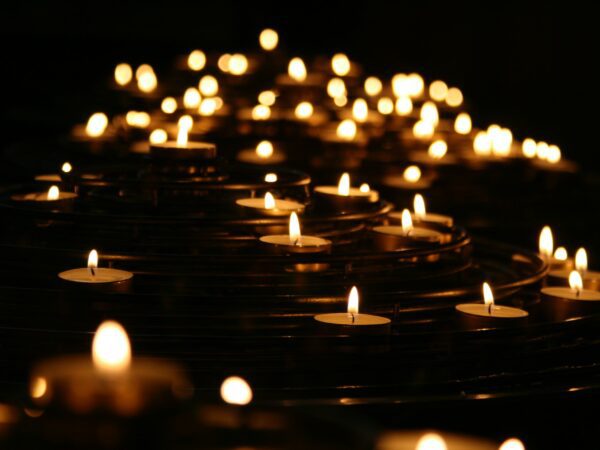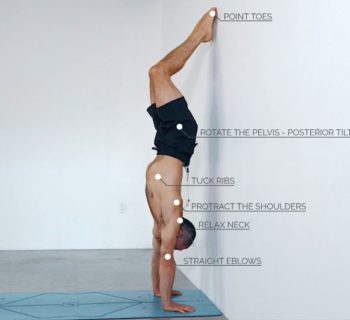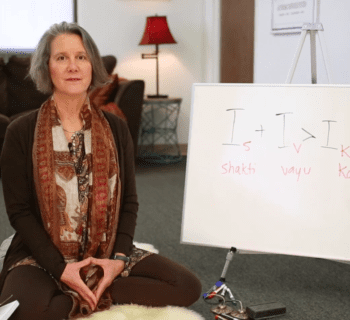You’ve most definitely seen the famous Sanskrit symbol for “Om” used in various places, such as jewelry, clothes, and even jokes about it on television, social media and in films.
When I ask a group of 20 preschoolers if they’ve done yoga half of them arch their backs rigid, cross their legs, squeeze their hands shut tight and say “ommmmmmmm” in a funny voice.
When 2 and 3 year olds telegraph yoga this way, it is safe to say this sacred sound has pervaded our entire culture. Since the presence of the Om symbol is seen virtually everywhere, what we get is degrading of its meaning. The symbol and all it stands for has lost its touch, its sacred meaning. Many people simply don’t understand its originally intended use and instead rep it as a cool lower back tattoo for the wrong purposes and places. If we want to use this symbol, we must understand and respect its true origin and meaning. So let’s dive into what it’s really about…
The Om symbol represents what is necessary in Vedic thought; it is one of the most sacred mantras in the Dharma. It means unity with the highest, a combination of spirituality and physicality. It appears at the beginning and as well as at the end of multiple Sanskrit prayers. This deep and powerful symbol refers to life and the whole universe.
“The syllable Aum, which is the imperishable Brahman, is the universe. Whatsoever has existed, whatsoever exists, and whatsoever shall exist hereafter, is Aum. And whatsoever transcends past, present, and future, that also is Aum.” ~ The Upanishads: Breath of the Eternal by Swami Prabhavananda and Frederick Manchester
Cultural appropriation is a long-standing problem that waters down the depth of meaning to which we often turn a blind eye. By definition, it is known that cultural appropriation is taking a fragment of a culture of which we are not a part and using it for our own purposes or benefits, without honoring the culture that brought that noun/thing/meaning to life. If you’re a bit confused on the difference between cultural appropriation and cultural appreciation, learn the differences here.
Om is so much more than just a symbol.
“Om is pure unitary consciousness, wherein awareness of the world and of multiplicity is completely obliterated. It is ineffable peace. It is the supreme good. It is One without a second. It is the Self. Know it alone! This Self, beyond all words, is the syllable Aum.” ~ The Upanishads: Breath of the Eternal by Swami Prabhavanand
Unfortunately, the appropriation of a foreign culture is often done among privileged people. If you’re thinking about getting yourself a tattoo with the Om symbol, think why do you want to use such a powerful, sacred sign? How do you connect to this symbol and what does it mean to you? If you want to connect to yoga, and are a die-hard yogi, might there be better ways to appreciate the yoga culture.
Get creative! Perhaps you can tattoo something personally inspiring to you. You can tattoo animals, poetry, the rising sun, but perhaps rethink about such a meaningful spiritual and religious symbol. Imagine a person out there with a cross tattoo, who doesn’t believe in Christianity but wants to embody the teachings of Jesus? A bit strange of a choice to label yourself with that religious symbol.
Also in the Hindu faith it is often considered problematic and disrespectful to place sacred symbols on parts of the body such as the feet or near private parts.
It helps to be fully aware of the power and cultural relevance of this symbol, and embedded in the culture to be able to tattoo such patterns. But ultimately it’s up to you… and I want you to THINK about why you are getting one, and how you will react when people ask you if you are Hindu; because spoiler alert, they will!
The existence of the Om symbol does not date back to a couple of hundred years ago, but rather several thousand years. This is cultivated in a given culture, worshipped and understood by its people.
Western culture often underestimates the history and power of such significant things. So much in the West is commercialized. Therefore, it is no wonder that Vedic practitioners and many Indic religions are outraged at our use of a sacred symbol to advertise a better yoga studio, a beer or a new sweatshirt design. We should respect such a distant and sacred culture, and stop spreading a fallacy of said culture, in a misunderstood and mindless manner.
If you TRULY feel attached to the Om symbol, and want to rep it as a tattoo, please know its true meaning and feel attached to what it represents. And definitely choose a place on your body that respects the symbol’s religious integrity. Remember what Om (A-U-M) means:
“Ahhh” expresses the creation of the universe and everything that is physically connected to it, and unites you with your ego. This syllable allows for an experience of the total existence of the world.
”Ohhhh” is a syllable that expresses the energy of the whole universe and your mind model. This sound unites you with your inner understanding that there is something beyond your physical body. It makes you feel light, good and balanced.
“Mmm” embodies the energy of the whole world, the thoughts and beliefs that created you. This portion of the sound connects you to the universe, cultivating a feeling of connection between everything and everyone around you, equally.
Given the exact meaning of the mantra pronounced, think about how you want to worship this symbol and how it will make you feel by having it marked on your body permanently. Will your beliefs change in 40 years?? Comment your thoughts below if you have an Om tattoo!
For more on this guest author, visit https://www.susannabarkataki.com/ to read other blog posts on cultural appropriation of yoga.
Start your 14-day Free Trial with Omstars Today!
By Susanna Barkataki

Deepen and Honor your Yoga Practice Here
An Indian yoga practitioner in the Shankaracharya tradition, Susanna Barkataki supports practitioners to lead with equity, diversity and yogic values while growing thriving practices and businesses with confidence. She is founder of Ignite Yoga and Wellness Institute and runs 200/500 Yoga Teacher Training programs. She is an E-RYT 500, Certified Yoga Therapist with International Association of Yoga Therapists (C-IAYT). Author of the forthcoming book Embrace Yoga’s Roots: Courageous Ways to Deepen Your Yoga Practice. With an Honors degree in Philosophy from UC Berkeley and a Masters in Education from Cambridge College, Barkataki is a diversity, accessibility, inclusivity, and equity (DAIE) yoga unity educator who created the ground-breaking Honor {Don’t Appropriate} Yoga Summit with over 10,000 participants. Learn more and get your free Chapter from her book on indigenous roots of trauma informed yoga at embraceyogasrootsbook.com/ Complimentary masterclass to embrace yoga’s roots without appropriation: www.namastemasterclass.com










